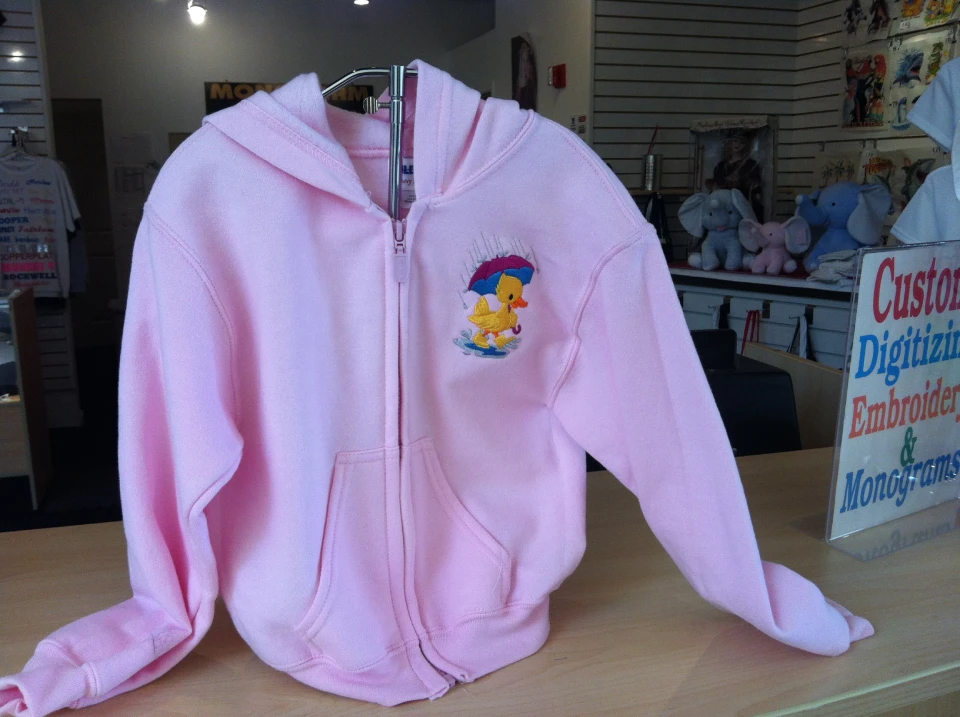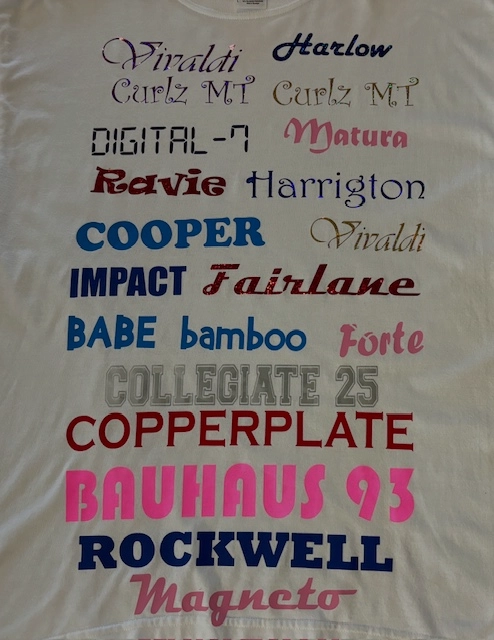Custom Embroidery for All Your Demands - From School Uniforms to Sports Teams
Custom Embroidery for All Your Demands - From School Uniforms to Sports Teams
Blog Article
The Art of Custom Needlework: Unlocking the Tricks to Creating Special and Memorable Styles
The keys to creating custom embroidery layouts that astound the eye and leave a long-term impact lie in a fragile equilibrium of strategy, imagination, and focus to detail. As we dive right into the world of custom needlework, we reveal the nuanced interplay between string selection, stitch intricacy, and layout personalization that boosts a plain garment to a job of art.
Choosing the Right Embroidery Threads
When choosing embroidery threads, what vital variables should you take into consideration to make sure the finest results for your personalized designs? The option of embroidery string is crucial in figuring out the final end result of your stitched design.
Additionally, the weight or thickness of the string plays a substantial function in the look of the needlework. Thicker threads can add measurement and structure to your style, while finer strings are perfect for detailed information and little message. Additionally, thinking about the color fastness and washability of the thread is essential to ensure that your custom layouts preserve their top quality and vibrancy with time. By thoroughly reviewing these elements and choosing top quality strings that satisfy your particular requirements, you can enhance the aesthetic appeal and long life of your stitched creations.
Exploring Various Stitch Methods
To look into the realm of 'Discovering Various Stitch Methods', one must grasp the intricacies and nuances that each stitching approach gives the art of embroidery. Different stitch strategies not only add aesthetic passion yet additionally contribute to the total texture and dimension of the design. One preferred stitch strategy is the satin stitch, which involves very closely stuffed parallel stitches to produce a smooth and glossy surface area, suitable for filling in shapes and creating bold outlines.
On the other hand, the backstitch is a functional technique often utilized for detailing and adding fine information. It includes sewing backwards to create a strong line of needlework. In addition, the French knot stitch adds a tactile aspect to layouts, best for creating distinctive accents like blossom facilities or ornamental touches.
Exploring various stitch techniques allows embroiderers to play with light, shadow, and depth within their layouts, raising the aesthetic appeal and creative high quality of their needlework jobs. By grasping various sewing techniques, one can open limitless possibilities for producing one-of-a-kind and memorable custom-made needlework items.
Incorporating Personalized Design Elements
Having discovered the ins and outs of various moved here stitch techniques such as the satin stitch, backstitch, and French knot, the focus currently changes in the direction of including customized layout components in custom embroidery jobs. Personalized style components play an essential function in making needlework projects truly distinct and remarkable.
Another means to incorporate customized layout elements is by consisting of icons or themes that hold special significance to the recipient or show their rate of interests and individuality. For instance, incorporating a favorite flower, animal, or hobby-related icon can make the embroidery layout a lot more significant and personalized. Additionally, choosing colors that reverberate with the recipient or straighten with the desired theme can further boost the customization of the embroidery project.
Understanding the Art of Shade Coordination

One key aspect of shade sychronisation is understanding color theory. This includes recognizing just how various shades engage with each various other, the emotions they share, and how they can be incorporated to produce aesthetically attractive designs. By using shade theory concepts, embroiderers can create unified color palettes that improve the general look of the design.
Furthermore, taking note of contrast is vital in shade control. Making use of contrasting colors can aid particular components of the style pop, boost readability, and develop a visually dynamic embroidery item. By mastering the art of color sychronisation, embroiderers can boost their layouts and create remarkable items that reverberate with clients and visitors alike.
Enhancing Appearance With Advanced Needlework Stitches

French knots, as an example, are excellent for including small, raised dots to your design, resembling the look of beads or creating a distinctive surface area. Bullion knots, on the check over here other hand, can be utilized to develop twisted, ropelike elements that include a luxurious feel to the needlework. Seed sewing includes tiny, scattered stitches that can complete locations with a multicolor texture, while turkey work develops cosy, dimensional accents evocative animal hair or vegetation. Explore these sophisticated embroidery stitches allows you to push the borders of typical embroidery and create really unique and visually enticing appearances in your designs.
Final Thought
Finally, the art of custom-made embroidery involves a combination of choosing the appropriate threads, exploring numerous stitch techniques, incorporating personalized style elements, grasping shade sychronisation, and improving texture with innovative stitches. By view it recognizing and applying these key components, embroiderers can create one-of-a-kind and remarkable styles that showcase their imagination and ability. Needlework fanatics can unlock the tricks to producing attractive and custom pieces that attract attention and leave a long lasting impact.
Report this page